5 Broccoli Growing Mistakes to Avoid in Fall Planting
Are you growing broccoli in your fall garden? I hope you are! My favorite time to grow broccoli is in the fall.
A couple of years ago for the first time, I was able to grow enough broccoli for my family for fresh eating throughout the fall and winter season plus enough to preserve for eating year-round. But let me tell you, getting this right was a journey full of trial and error.
I’ve been gardening for over 10 years now, but I’ve made a lot of mistakes when it comes to growing broccoli. It has taken me several tries to get just the right timing and amount to plant. I want you to be able to avoid those mistakes so you can have a better harvest sooner.
Let’s, then, talk about the five mistakes I’ve made or I’ve seen others make, that when you avoid them (especially in a fall garden), you have a better chance of fall broccoli success.
Mistake #1: Not Trying to Grow in the Fall in the First Place
It’s important to understand that broccoli loves cool weather. When I started out, I planted out my plants early in the spring thinking that I had plenty of time to get the plant to form a head before the summer heat set in.
What I learned though is that in my Arkansas climate, we go from cold to hot really fast, which caused my plants to flower instead of form a head. When the broccoli plant flowers, there’s really nothing you can do, unfortunately, because the plant has switched into seed production mode.
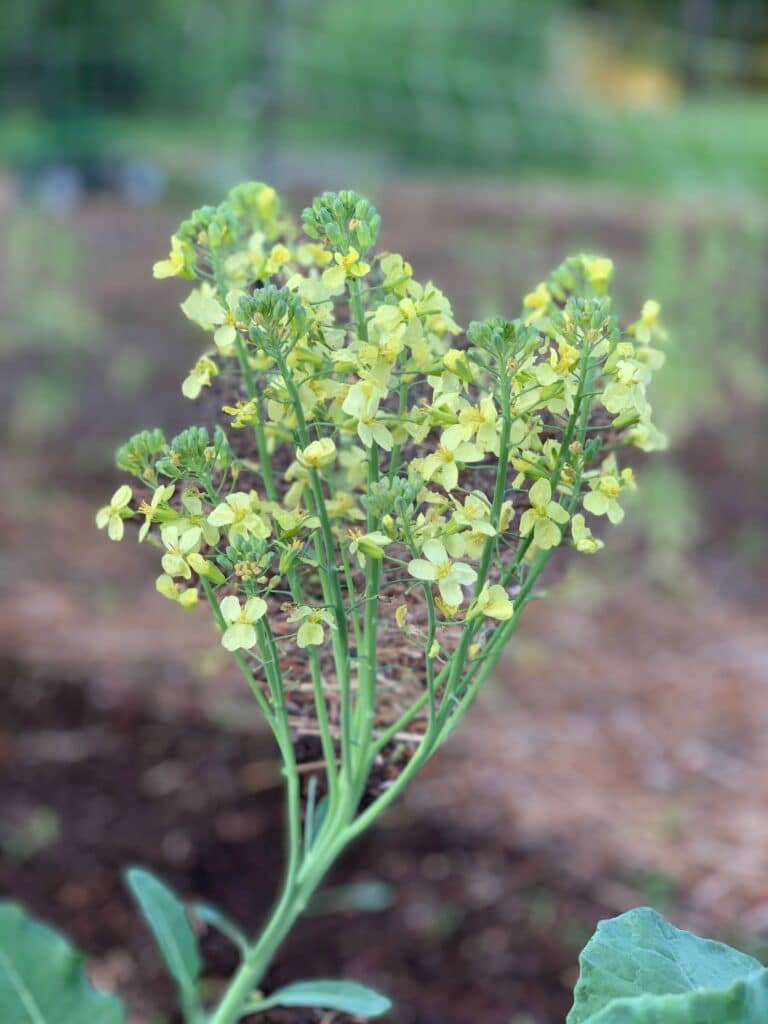
After several springs of this disappointment, I decided to try and grow it in the fall. This worked out much better. When the plants mature in the cool weather instead of the warm to hot weather, the broccoli is less likely to flower and instead will keep growing a strong head.
Keep in mind that broccoli, as a cool season crop, can take freezing temperatures. But if the forecast calls for overnight lows much below freezing, adding a floating row cover can extend your season.
Mistake #2: Planting the Wrong Type
For the first few years that I grew broccoli in the fall, I grew a type of broccoli that, while it grew well, never produced the large central head that I wanted.
All that changed when a podcast listener from Texas emailed me a few of the varieties that he uses in his warm climate. After I tried those, I saw a significant difference in my broccoli harvest. The two varieties he suggested were Green Magic and Castle Dome. They produced large heads, made it through the early summer heat, and gave me a harvest well into December under cover.
While I recommend you try out these varieties, the bigger point is that if one variety isn’t producing well for you, try another. Ask other gardeners who grow in a similar climate. Eventually, you should land on a variety that works well for you.
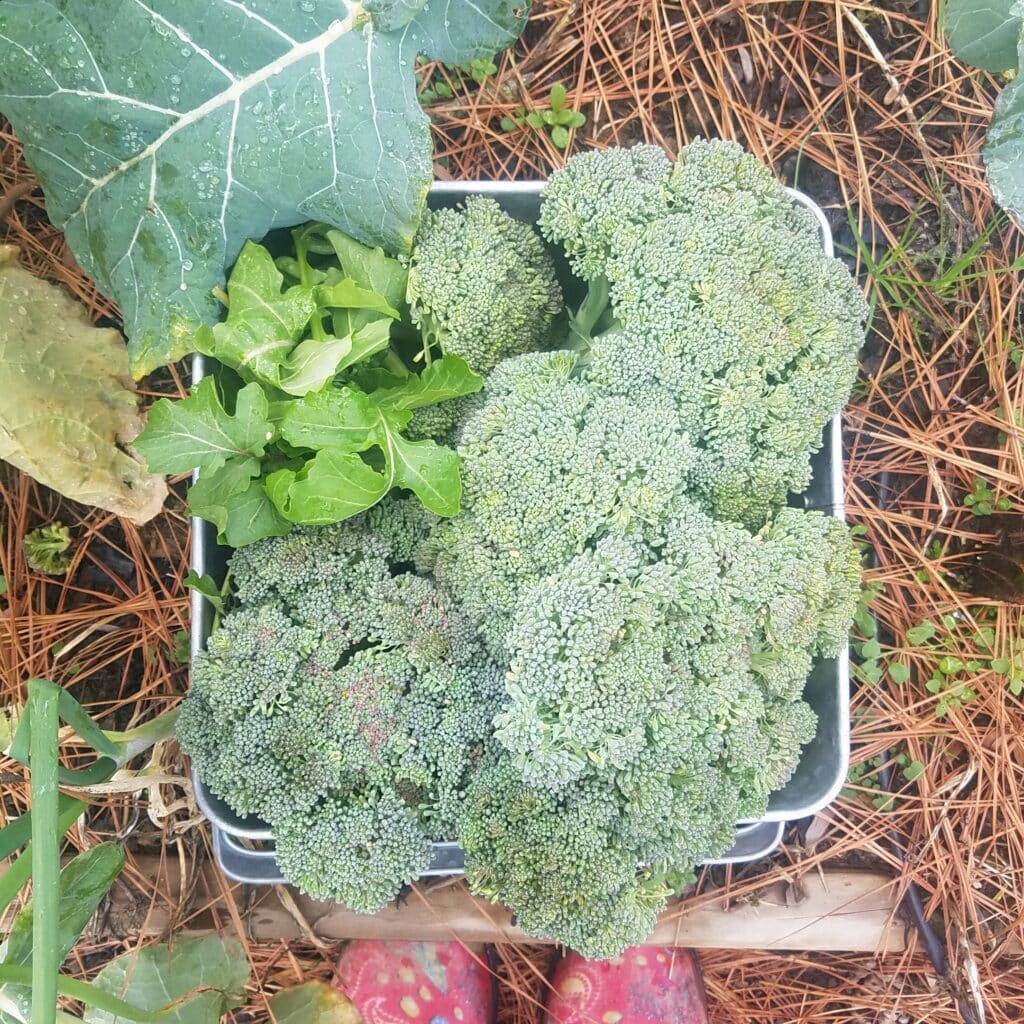
Mistake 3: Not Covering With Insect Netting
If you don’t cover your broccoli (and other brassicas) right away with insect netting, you’ve probably seen holes in the leaves of your broccoli in short order — especially if you plant in the fall.
The cabbage worm is highly active in the late summer and inflicts a lot of damage to young plants. Not only do they eat the leaves but they will also get into the heads and can decimate the crop quickly. If you do find these worms on your plants, you can organically treat them with BT.
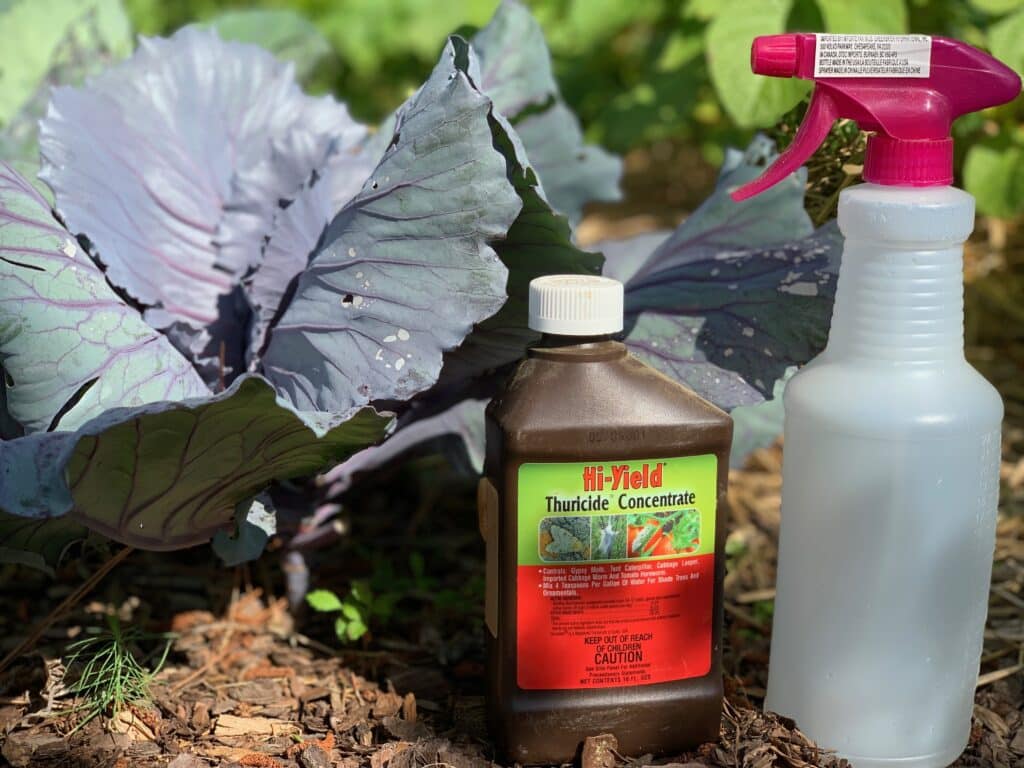
But let’s be honest, sometimes I am a lazy gardener. I don’t want to have to spray in my garden. Adding insect netting at the time of planting out my broccoli plants can avoid this all together. Just make sure that the netting is very secure because those moths are persistent and they will find any opening that you may have in the net. Broccoli does not need to be pollinated to produce a crop so you can leave the netting on until you’re ready to harvest.
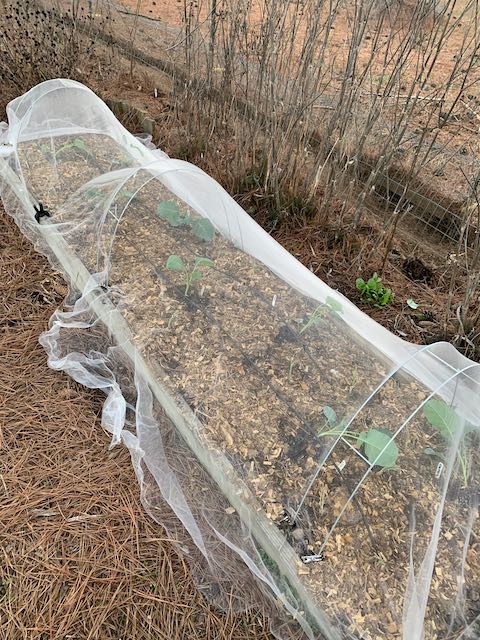
You can find the insect netting I use on my Amazon Favorites here.
Mistake #4: Planting in the Heat
Don’t let the term “fall garden” fool you. With fall crops like broccoli, you’re going to have to plant in the late summer if you want the crop to mature before the cold. This means that depending on where you’re located, you could be planting these small plants in July or August — often the hottest periods of the year.
What do you do, then, if you have to plant in these hot periods?
First of all, don’t in the middle of the day in late summer. I wouldn’t even plant in the morning. The heat of the day can cause extra added stress to the plant that already doesn’t prefer to be in hot weather anyway. Instead, transplant them in the evening after it has cooled down slightly. This gives them all night and into the morning to get used to their new home before the heat of the day sets in.
I also try to plant when I see we are experiencing a cool front. Maybe that just means it’s a few days of not 90 degree weather and maybe it’s a few days where it’s cloudy and overcast. Make sure that you have properly hardened off your transplants before putting them out into the garden.
Mistake #5: Not Shading in the Heat
When you plant in the late summer, you’d be amazed at what a little bit of shade at transplanting time can do. I now shade my plants right away after transplant with shade cloth.
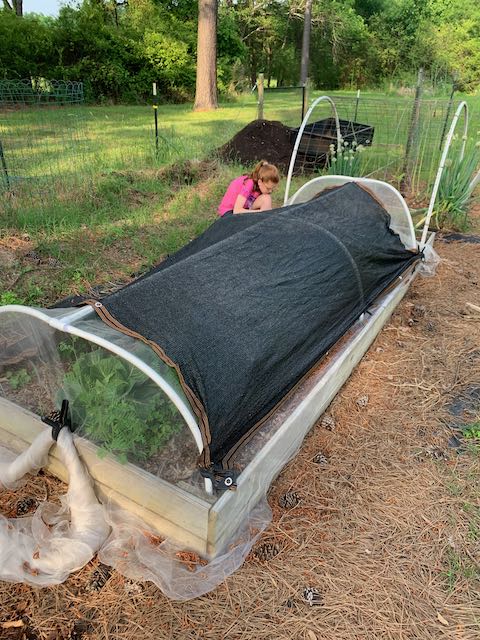
But don’t try to use the shade cloth as your insect netting as well. I tried cutting this corner in the past and it actually didn’t give my plants the airflow they needed. My plants suffered and some of them ended up baking in the stagnant heat.
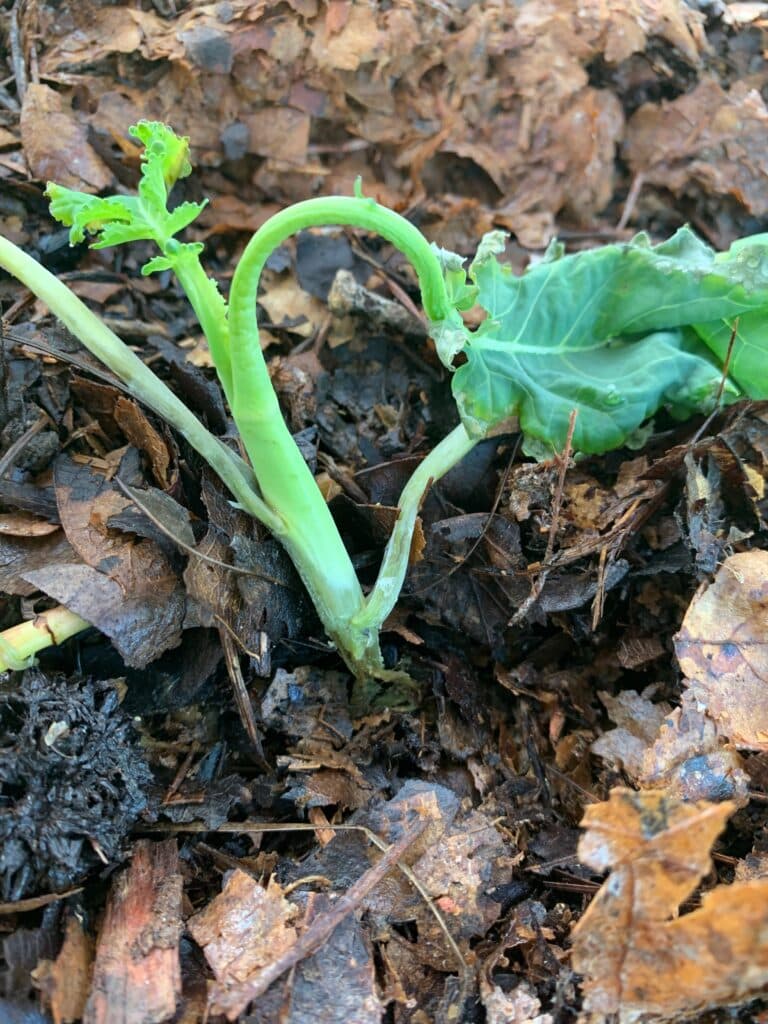
Instead, secure your insect netting on then drape the shade cloth on overtop of it. Position of the shade cloth on the south or southwest side so it is still getting direct morning sun but not in the afternoon. By only covering half of the bed, the plants will also benefit from added airflow from the north or northeast.
Only leave the shade cloth in place for a couple of weeks until the plants get rooted in. After that, remove it so the plants can benefit from full sun, which they need with the shorter fall days.
Bonus Tip
Rabbits love broccoli plants. If you don’t have a way to keep them out of your garden, it’s even more important to secure insect netting, which can keep both the cabbage moth AND rabbits out. Trust me, it is such a hard thing to go out and find that a rabbit has eaten an entire crop of your broccoli overnight.
I hope these tips have helped you avoid making the same mistakes that I did and you can have a great harvest this year!
Do you get overwhelmed with garden planning?

Subscribe here for my best tips to plan your garden in just 7 days -- all for FREE.
Plus, I'll send you my "In the Garden E-mail" on Fridays, periodic updates on garden resources relevant to you, and you'll receive access to my entire bank of free garden downloads!
You are also agreeing to our privacy policy.

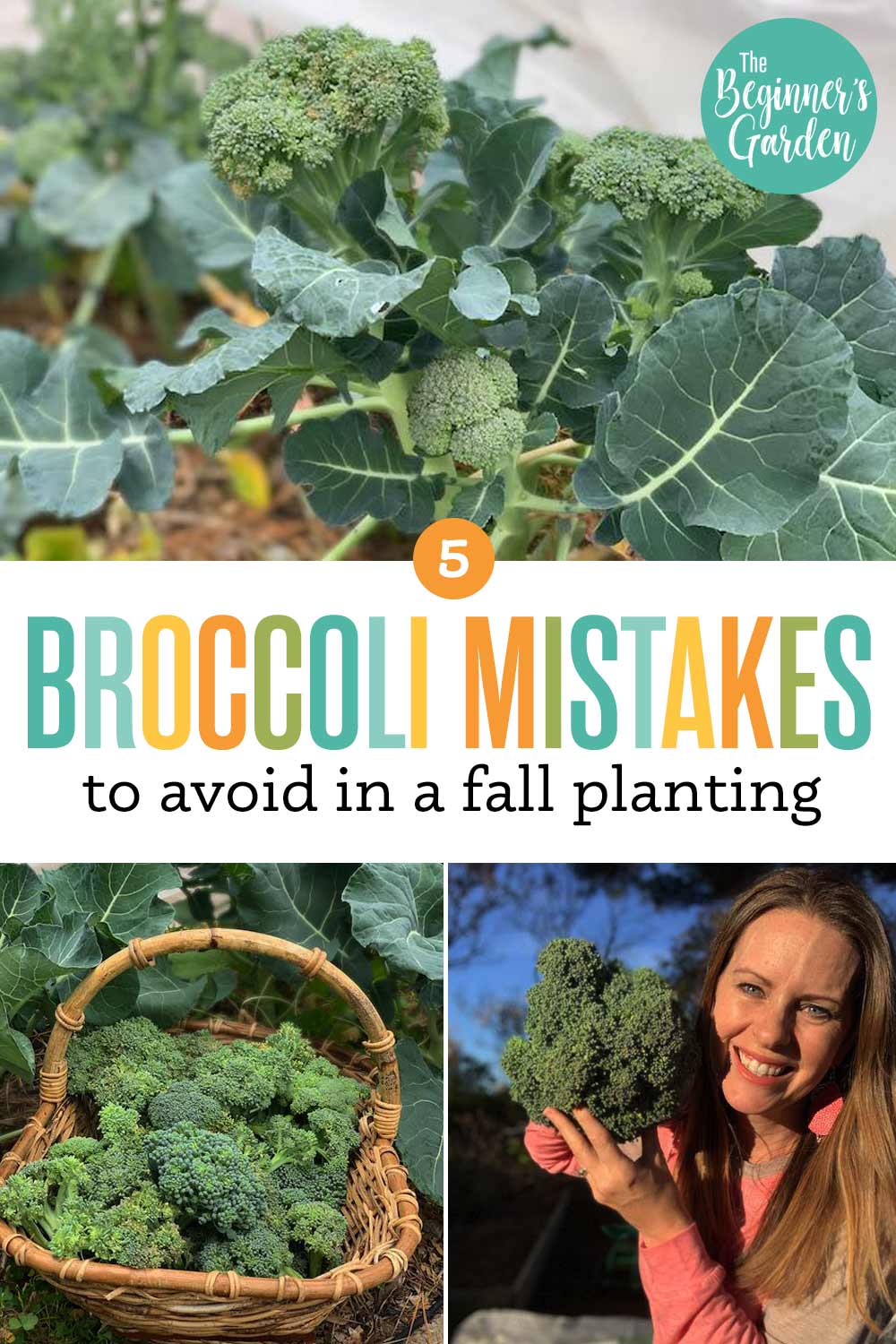
Thank you for this! Do you always start broccoli indoors or can you direct sow in the garden?
I always start indoors.